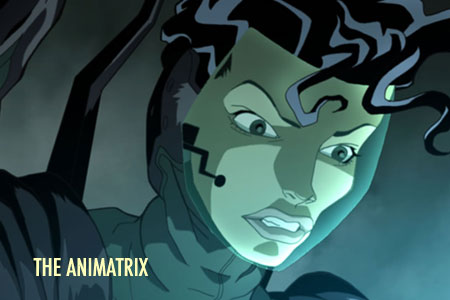Ask John: How Much Influence do Americans Have in Anime Co-Productions?

Question:
How much creative influence do Americans have on US/Japan co-produced anime? While titles like The Animatrix, Highlander: The Search for Vengeance and Batman: Gotham Knight appear to be essentially American produced and written concepts with the animation produced by Japanese studios, other titles like Kite Liberator, Afro Samurai, and Vampire Hunter D: Bloodlust seem to be written and directed by an entirely Japanese staff. All the same, the above mentioned titles clearly have a “certain something” that separate them from typical Japanese animation. When American studios specifically co-produce anime, do they just write a check and then get the license in return, or do they have as much influence and control as a typical Japanese producer would hold?
Answer:
The ability to thoroughly and conclusively answer this question, I think, would require omnipresent knowledge of the production details behind every American/Japanese co-production. Domestic producers typically don’t discuss extensive details of their input into anime production, so I can only respond with speculation and limited anecdotal information.
The exact balance of cooperation for each American/Japanese co-production is probably unique to each production. But I think that it’s generally safe to divide American/Japanese co-productions into three categories – commissions, co-productions, and sponsorships.
Commissions are works like The Last Unicorn and Batman: Gotham Knight that are written and financially sponsored by American creators and producers. In these cases, the Japanese animators are little more than hired labor. While the Japanese animators may input their own suggestions and artistic styles, they’re still constrained to adhere to the fundmental script and narrative structure provided by the American creators.
Co-productions are literal partnerships involving significant creative input from both American and Japanese artists, such as The Animatrix, Highlander: The Search for Vengeance, and The Big O II. In the case of The Animatrix, some of the stories were created by the Wachowski brothers while others were original Japanese creations. Highlander: Search for Vengeance producer H. Galen Walker has stated publicly that film director Yoshiyaki Kawajiri put his own spin on the film. (As of this writing, director Kawajiri’s cut of the film has yet to be officially released.) American translator for The Big O television series David Fleming has stated publicly that Sunrise Studio’s original scripts for The Big O II were initially written in Japan, sent to the American Cartoon Network for review and critique, then sent back to Japan before being animated, resulting in a Japanese anime produced with some American supervision.
Finally, there are sponsorships, which may be defined as licenses or financial contributions such as Vampire Hunter D: Bloodlust, Pandalian, and the Guyver and Samurai Champloo television series. In these cases, American investors or distributors may contribute funds to the production of Japanese anime, or may “pre-license” titles, but not have significant creative input. For example, during the 2004 Anime Boston convention, Geneon spokesman Chad Kime stated that Geneon USA co-produced the L/R anime series and would have requested that the series minimize its characters smoking cheap cigarettes if they’d had more foreknowledge and involvement in the animation production. Vampire Hunter D: Bloodlust had private American financing, but was exclusively a Japanese created anime. However, even in a case like this, a consciousness that the anime would be distributed internationally may have influenced director Yoshiyaki Kawajiri’s directorial decisions. So American distribution may impact the way anime is made even if American producers don’t have a literal hand in the production.
Add a Comment
You must be logged in to post a comment.


I’m always nervous when I hear of American companies or even the fan community charting the course of an anime production. I keep thinking back to the Ninja Scroll series, which exploited just about everything that made the movie great, but in the blandest way possible. I can’t help but think the only reason this series exists is because of the popularity of the film in America, since it tanked in Japan.
I also shake my head whenever I hear the original Street Fighter II V opening and endings. Everytime I hear them, I exclaim “We got ripped off!” I’m not sure what Manga was thinking when they chopped off the incredible original music and stapled on the lousy American-produced techno we’re forced to listen to today. I’ve always hated it, even before I knew it was a replacement for something better. All because someone decided Americans didn’t want Japanese music in their Street Fighter cartoon.
But that’s getting into a different topic. My question is this: why can’t American fans be satisfied with what the Japanese creators give us? I personally don’t mind that sequels to series I love aren’t being produced because I wouldn’t want the creator (or corperate suits) to stretch a title further than it was meant to go. I’d rather have one great series than one great series with a putrid one attached to it.